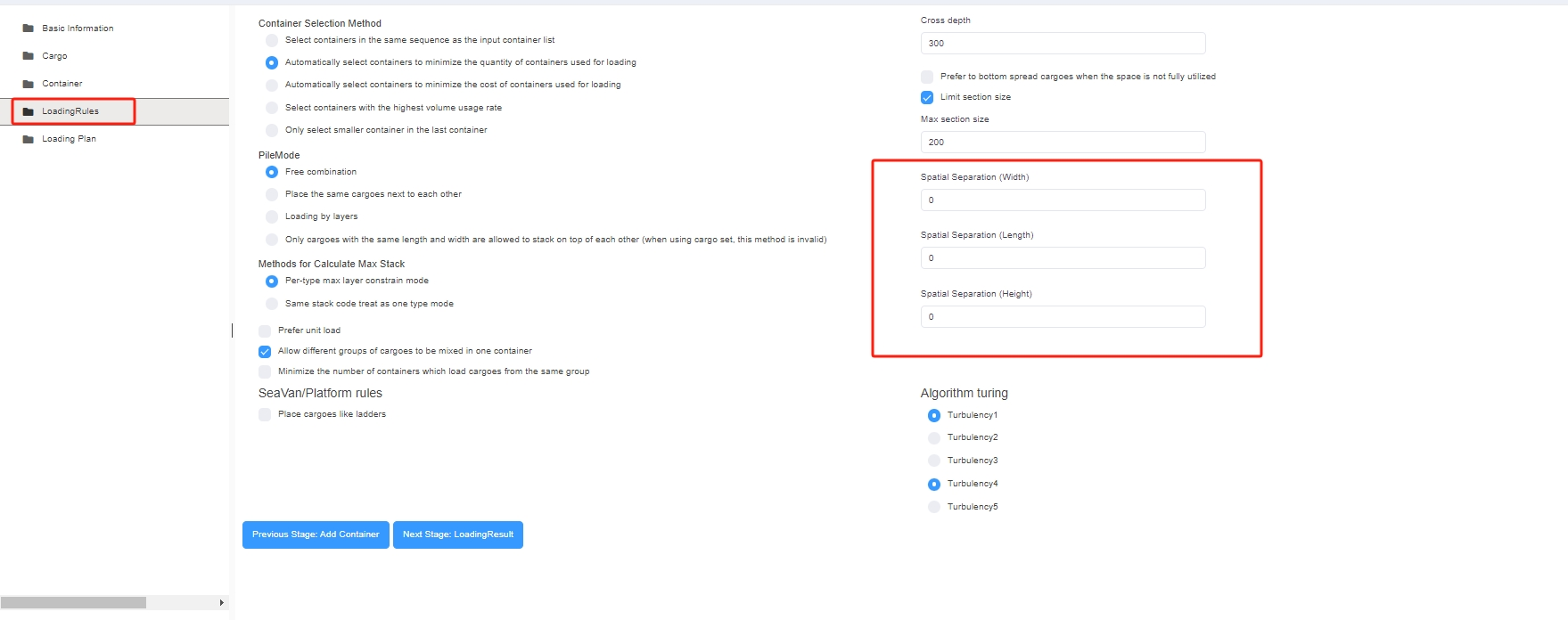Have you ever encountered this situation: when calculating the container loading plans in load planning optimization software, the goods seem to fit, but in reality during on-site loading, they don’t fit and there’s cargo left? What could be the reason behind this?
Well maybe it’s because you forget the carton may expand and also the unavoidable gap between cargoes when loading them by human labor.
So is that possible that we set aside some space in the container for these possibilities while using LoadMaster load planning optimization software?
The answer is a definite yes!
In LoadMaster load planning optimization software, users can reserve some space in the container to simulate the potential carton expansion and gap between cargoes when working staff load them into containers.
Interval and carton expansion is inevitable in actual loading operation. In order to ensure the designed loading scheme is feasible, it is necessary to reserve a certain size in advance to ensure that all the goods can be fully loaded on site.
1.If the size of the cargo is actually measured, the cargo is loaded directly after production, and the container has standard inner inches (i.e. 20GP: 589×235×239CM, 40GP: 1200×235×239CM, 40HQ: 1200×235×269CM), under such condition, two methods can be set to simulate the situation of manual loading interval. You can set the reserved size of container or cargo interval, which is an empirical value. And you can know the most reasonable size to reserve in the container after using the 3D loading plans designed by LoadMaster to guide on-site loading 2-3 times.
(1) When setting the reserved size in the container interface for the first time, the recommended numerical values are as follows:
The packaging boxes are all carton packaging, or most of them are carton packaging and only few of them are wooden boxes and iron boxes, etc., and they are directly packed by manual labor.
20GP: recommend to reserve 5-8CM in length, 3-5CM in width, 3-5CM in height
40GP/40HQ: recommend to reserve 10-15CM in length, 3-5CM in width, 3-5CM in height
The packing boxes are all wooden boxes or pallets or iron boxes, which do not involve carton loading, or only a very small number of cartons. And a forklift is used when loading.
20GP: recommend to reserve 5-8CM in length, 3-5CM in width, 10CM in height
40GP/40HQ: recommend to reserve 10-15CM in length, 3-5CM in width, 10CM in height
The [reserved height] of container should be 10CM, which means the size of corner castings(10cm×10cm×10cm) is also deducted, therefore the size of corner castings should be set to “0”.

(2) In the [Loading Rules] interface, reasonably set the [spatial separation] in length, width and height directions of each cargo. It is recommended to set about 1CM for the first use.

2.If the goods are packaged in cartons with theoretical dimensions and are stored in a warehouse for a week or more before shipment, consideration should be given to the potential expansion of the cartons due to stacking pressure in the warehouse. According to experiments conducted by Japanese experts, the deformation of cartons due to stacking pressure in warehouses ranges from 1% to 1.8% of the original dimensions.
3.If the size of the cargo has been enlarged by 1-2CM, there is no need to set the reserved size of containers or interval between cargoes.
4.If the container dimensions have been reasonably deducted, there is no need to further set aside space in the container or create gaps between the items.